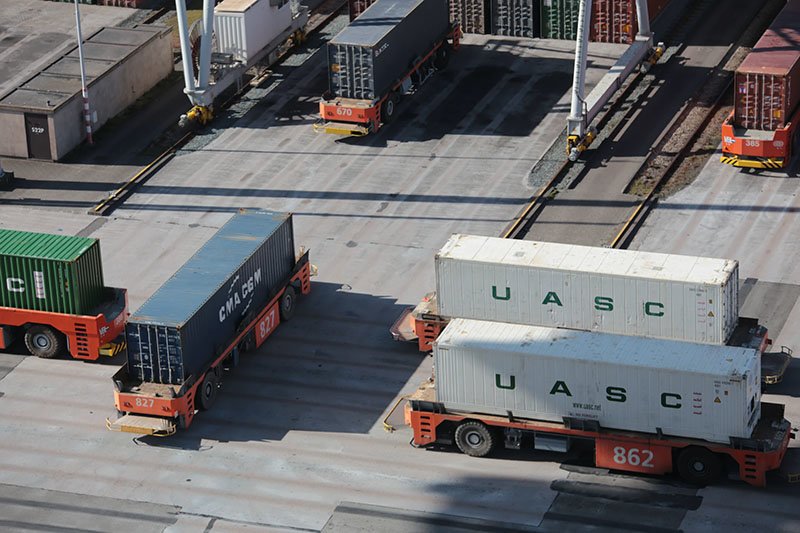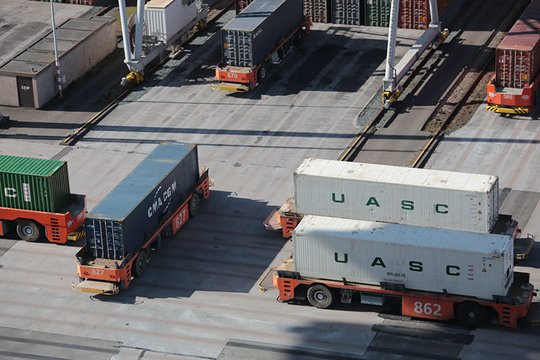Partnerships
The Benefits of Consolidated Shipping
For international sourcing, this is the most sustainable and cost-effective option, saving businesses up to 40%



In the era of globalization, international buying has become increasingly popular, allowing individuals to access a wide range of unique products from around the world. However, international shipping is complex to navigate and costs can be hard to predict, which leads to a significant deterrent for many buyers, particularly when purchasing multiple items from different sellers. Fortunately, consolidated shipping offers a solution that not only addresses these concerns but also brings other notable benefits to the table. In this article, we will explore the advantages of consolidated shipping for buyers who are willing to pre-purchase and wait for their shipments, emphasizing its sustainability and potential cost savings of up to 40 percent.
Consolidated Shipping: An Overview
Consolidated shipping, also known as groupage shipping, is a logistics practice that involves combining multiple shipments from different customers into a single container or shipment. Rather than shipping individual packages separately, a consolidation service brings together goods destined for the same location, streamlining the process and optimizing efficiency.
-
Cost Savings
When buying internationally, shipping costs can quickly add up, especially if you purchase from multiple sellers from one region. Consolidation allows buyers to pool their shipments, sharing the transportation costs among multiple packages. Consolidation also allows for the combination of different package types, such as combining bulky items with heavy items, while hybrid shipments can be packed more efficiently leading to reduced logistics costs. This shared cost model often allows for substantial savings, with estimates suggesting that consolidated shipping can reduce expenses by up to 40 percent for bulky items. -
Sustainable Shipping Solution
In addition to the financial benefits, consolidated shipping is also a more sustainable option compared to shipping individual packages separately. By consolidating shipments, the overall volume of transported goods increases, maximizing the utilization of container space and reducing the number of shipments required. By grouping multiple shipments together, logistics providers can optimize transportation routes, reduce transit times, and improve overall delivery reliability. Consolidation also enables smaller packages to be shipped in a carbon efficient way, by opening up the opportunity to ship using truck, rail and sea which are more sustainable than air freight. This efficiency improvement significantly minimizes carbon emissions and reduces the environmental impact associated with transportation. -
Reduction in Packaging Waste
When buyers opt for consolidated shipping, the need for excessive packaging materials decreases. Instead of each item being individually packaged, the items are consolidated into a single shipment. This not only reduces the amount of packaging waste generated but also contributes to overall waste reduction throughout the supply chain.
Some disadvantages and pre-planning must be considered when choosing consolidated shipping
- Pre-Planning: Consolidated shipping often requires extensive pre-planning and coordination. It may involve aligning the schedules of multiple suppliers or shippers to ensure that the cargo can be consolidated effectively. This process can be time-consuming and complex, especially when dealing with multiple parties in different locations.
- Willingness to wait: Consolidated shipping typically involves waiting for a sufficient amount of cargo to be accumulated before shipping. This waiting period can result in longer lead times compared to dedicated or direct shipping options. If a company requires fast and time-sensitive delivery, consolidated shipping may not be the most suitable choice.
- Cash flow: Due to the need to purchase and wait, consolidated shipping can impact cash- flow management. Since goods are shipped after a certain accumulation threshold is reached, there may be delays in receiving inventory and fulfilling customer orders. This delay in turnaround time can affect the cash flow of businesses, especially those with tight inventory control or operating on a just-in-time model.
Conclusion
Consolidated shipping is an excellent choice for buyers who are willing to pre-purchase and wait for their international shipments. By leveraging this approach, buyers can enjoy numerous benefits, including substantial cost savings of up to 40%. Consolidated shipping also contributes to sustainability efforts by reducing carbon emissions, minimizing packaging waste, and improving supply chain efficiency. With the added advantage of enhanced tracking and visibility, buyers can confidently embrace this more economical and environmentally friendly option for international buying needs.
In the era of globalization, international buying has become increasingly popular, allowing individuals to access a wide range of unique products from around the world. However, international shipping is complex to navigate and costs can be hard to predict, which leads to a significant deterrent for many buyers, particularly when purchasing multiple items from different sellers. Fortunately, consolidated shipping offers a solution that not only addresses these concerns but also brings other notable benefits to the table. In this article, we will explore the advantages of consolidated shipping for buyers who are willing to pre-purchase and wait for their shipments, emphasizing its sustainability and potential cost savings of up to 40 percent.

Consolidated Shipping: An Overview
Consolidated shipping, also known as groupage shipping, is a logistics practice that involves combining multiple shipments from different customers into a single container or shipment. Rather than shipping individual packages separately, a consolidation service brings together goods destined for the same location, streamlining the process and optimizing efficiency.
-
Cost Savings
When buying internationally, shipping costs can quickly add up, especially if you purchase from multiple sellers from one region. Consolidation allows buyers to pool their shipments, sharing the transportation costs among multiple packages. Consolidation also allows for the combination of different package types, such as combining bulky items with heavy items, while hybrid shipments can be packed more efficiently leading to reduced logistics costs. This shared cost model often allows for substantial savings, with estimates suggesting that consolidated shipping can reduce expenses by up to 40 percent for bulky items. -
Sustainable Shipping Solution
In addition to the financial benefits, consolidated shipping is also a more sustainable option compared to shipping individual packages separately. By consolidating shipments, the overall volume of transported goods increases, maximizing the utilization of container space and reducing the number of shipments required. By grouping multiple shipments together, logistics providers can optimize transportation routes, reduce transit times, and improve overall delivery reliability. Consolidation also enables smaller packages to be shipped in a carbon efficient way, by opening up the opportunity to ship using truck, rail and sea which are more sustainable than air freight. This efficiency improvement significantly minimizes carbon emissions and reduces the environmental impact associated with transportation. -
Reduction in Packaging Waste
When buyers opt for consolidated shipping, the need for excessive packaging materials decreases. Instead of each item being individually packaged, the items are consolidated into a single shipment. This not only reduces the amount of packaging waste generated but also contributes to overall waste reduction throughout the supply chain.

Some disadvantages and pre-planning must be considered when choosing consolidated shipping
- Pre-Planning: Consolidated shipping often requires extensive pre-planning and coordination. It may involve aligning the schedules of multiple suppliers or shippers to ensure that the cargo can be consolidated effectively. This process can be time-consuming and complex, especially when dealing with multiple parties in different locations.
- Willingness to wait: Consolidated shipping typically involves waiting for a sufficient amount of cargo to be accumulated before shipping. This waiting period can result in longer lead times compared to dedicated or direct shipping options. If a company requires fast and time-sensitive delivery, consolidated shipping may not be the most suitable choice.
- Cash flow: Due to the need to purchase and wait, consolidated shipping can impact cash- flow management. Since goods are shipped after a certain accumulation threshold is reached, there may be delays in receiving inventory and fulfilling customer orders. This delay in turnaround time can affect the cash flow of businesses, especially those with tight inventory control or operating on a just-in-time model.
Conclusion
Consolidated shipping is an excellent choice for buyers who are willing to pre-purchase and wait for their international shipments. By leveraging this approach, buyers can enjoy numerous benefits, including substantial cost savings of up to 40%. Consolidated shipping also contributes to sustainability efforts by reducing carbon emissions, minimizing packaging waste, and improving supply chain efficiency. With the added advantage of enhanced tracking and visibility, buyers can confidently embrace this more economical and environmentally friendly option for international buying needs.

